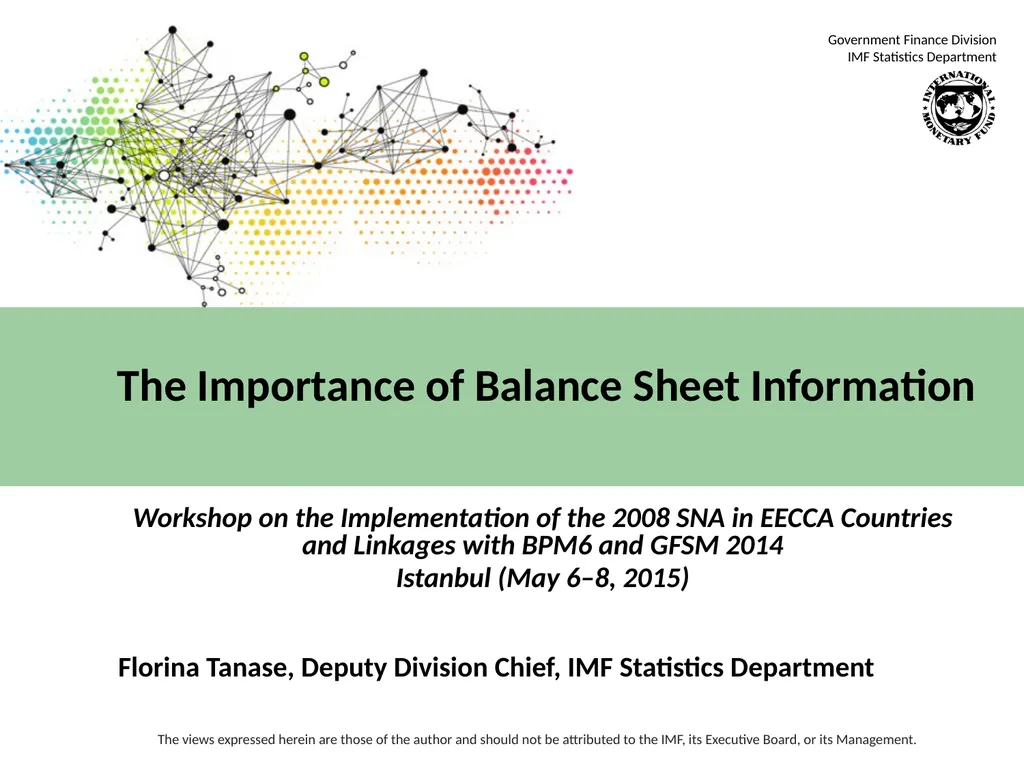Workshop on the Implementation of the 2008 SNA in
Author : pamella-moone | Published Date : 2025-11-01
Description: Workshop on the Implementation of the 2008 SNA in EECCA Countries and Linkages with BPM6 and GFSM 2014 Istanbul May 68 2015 Florina Tanase Deputy Division Chief IMF Statistics Department The Importance of Balance Sheet Information
Presentation Embed Code
Download Presentation
Download
Presentation The PPT/PDF document
"Workshop on the Implementation of the 2008 SNA in" is the property of its rightful owner.
Permission is granted to download and print the materials on this website for personal, non-commercial use only,
and to display it on your personal computer provided you do not modify the materials and that you retain all
copyright notices contained in the materials. By downloading content from our website, you accept the terms of
this agreement.
Transcript:Workshop on the Implementation of the 2008 SNA in:
Workshop on the Implementation of the 2008 SNA in EECCA Countries and Linkages with BPM6 and GFSM 2014 Istanbul (May 6–8, 2015) Florina Tanase, Deputy Division Chief, IMF Statistics Department The Importance of Balance Sheet Information Overview Why Balance Sheets Matter? Balance Sheet Analysis in IMF Surveillance Data Sources and Data Gaps for the Balance Sheet Analysis Looking Forward 2 Why Balance Sheets Matter? “National balance sheet analysis, examining vulnerabilities in all sectors individually and in aggregate, could have made a difference to preventing the global financial crisis.“ Sir Paul Tucker, Former BOE Deputy Governor, from the 2014 Triennial Surveillance Review (TSR) External Study on Risks and Spillovers. 3 Balance Sheet Analysis in IMF Surveillance (1/10) Economic and financial surveillance: one of the most important roles of the IMF; it focuses on identifying risks and policies to mitigate them Keeping surveillance relevant: triennial surveillance reviews (TSRs) with the most recent completed in September 2014 2014 TSR priorities: Deepen analysis of risks and spillovers Increase attention to national balance sheets and cross-border positions Further develop the balance sheet approach (BSA) based on granular national and external balance sheets 4 Balance Sheet Analysis in IMF Surveillance (2/10) Key recommendation of the 2014 TSR: strengthen analysis of national balance sheets “The Fund has overhauled its surveillance to make it more risk based and better reflect global interconnections… The goal now is to take this work to the next level, by focusing more on how risks spread across countries and how, in turn, spillovers can transmit across sectors.” 5 Balance Sheet Analysis in IMF Surveillance (3/10) Why develop balance sheet analysis? TSR proposes expanding balance sheet analysis in surveillance for: Indicators of balance sheet vulnerability (i.e., FX mismatches) Scenario analysis tracing transmission of shocks across sectors Assess consistency of growth outlook and balance sheet condition Exploit data improvements using BSA matrix as surveillance tool Start with basic sector disaggregation possible with IMF data and expand Allows analysis of linkages across sectors, not just one sector at a time 6 Balance Sheet Analysis in IMF Surveillance (4/10) The IMF use of balance sheets in surveillance evolved over time: Pre-Asian crisis: balance sheets with focus on public and external debt Asian crisis led to development of the balance sheet matrix covering entire economy—balance sheet approach (BSA) Global crisis highlighted gaps in balance sheet analysis related to (i) increased financial complexity and (ii) inadequate surveillance of cross-border














